| Dimensions | 60 mm |
|---|---|
| Focal Length (mm) | |
| Max Aperture (f) | |
| Aperture Blades | |
| Elements | |
| Rear Mount | |
| Front Thread | |
| Production |
Agfa Color-Agolar 60/2.8
Six-element lens for Agfacolor 250 Series. Black plastic barrel. [Cat 4874/100].
Category: Transparencies
Reviews
Add a review Cancel reply
Related to . . .
Related products
-
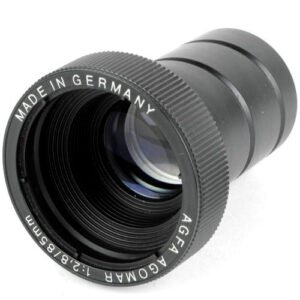
Agfa Agomar 85/2.8 [V4]
Compare -

Agfa Agomar 70-120/2.8
Compare -

Braun Color-Autogon 85/2.8
Compare -

Aldis Anastigmat 152/4
Compare -

Apollo 100-150/3.5
Compare -

Agfa Agolar 85/2.5
Compare -

Appro 100-225/4
Compare -

Benoist Berthiot 60/1.6
Compare -

Aldis Uno 200/4.5
Compare -

Benoist Berthiot 125/2.8
Compare -

Pentacon AV 150/2.8
Compare -

Arsenal Triar-3 85/2.8
Compare -

Benoist Berthiot 110/2.4
Compare -

Pentacon AV 200/4
Compare -

Agfa Variomar 80-125/3.1
Compare -

Agfa Agomar 85-150/4
Compare -

Agfa Color-Agolar 250/4.5
Compare -
 SOFT
SOFTAgfa Agomar 90/2.8
CompareSOFT -

Argus Projection Anastigmat 100/3.3
Compare -
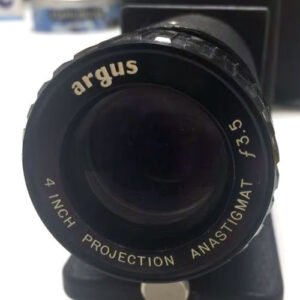
Argus Projection 100/3.5
Compare -

Agfa Agomar 100/2.5 [V2]
Compare -

Ansco 127/3.5
Compare -

Benoist Berthiot 75/2.8
Compare -

Aldis Anastigmat 85/2.5 [V1]
Compare -

Benoist Berthiot 150/3.3
Compare

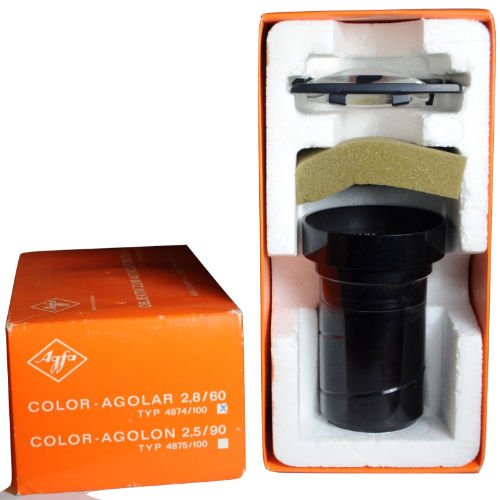




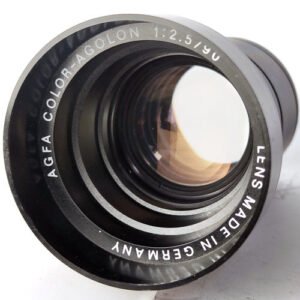
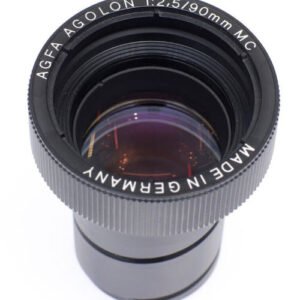
16:9 –
There are many Agolars but only one Color-Agolar – the shorter 60mm sibling of the Color-Agolon 90/2.5. The Color-Agolar shares the smooth-rendering style of its big brother, and is perhaps a little sharper. Designed for short-throw projection of 35mm and medium format transparencies, it has an unusually long register for a 60mm optic – and a usefully capacious image circle, allowing generous movements on 36x24mm sensors or comfortable coverage of GFX and 645z medium format sensors.
The Color-Agolar’s look is Cooke-like: adequate resolution when in focus, sliding gracefully into harmoniously blended bokeh that never distracts: mechanical vignetting is minimal on 36x24mm by virtue of its compact length and large image circle. Saturation is on the richer side of average but the tonality is soft, with pleasingly low contrast, easily tweaked in post if bolder rendition is preferred. The results may remind some of the Isco/Schneider Cinelux family, but bokeh isn’t quite as creamy-smooth – partly due to the lost stop. However, across-the-frame performance is much more consistent here: the ‘pop’ of Cinelux lenses derives partly from their many aberrations in the outer image circle: this is a much better behaved (and therefore less ‘characterful’) tool.
A desirable but rather uncommon projector lens worth seeking out.